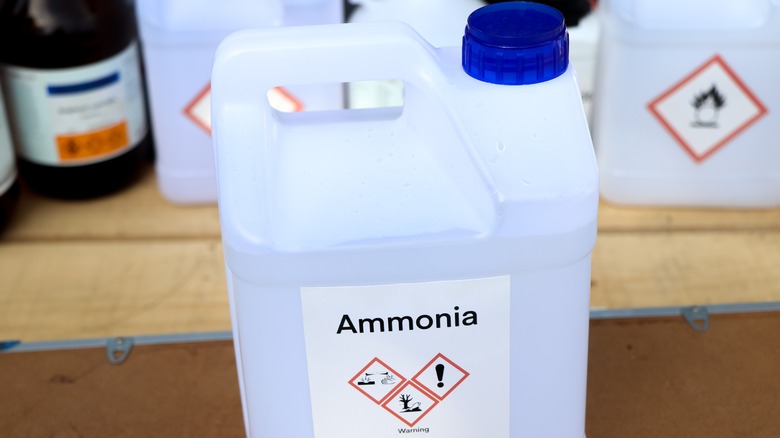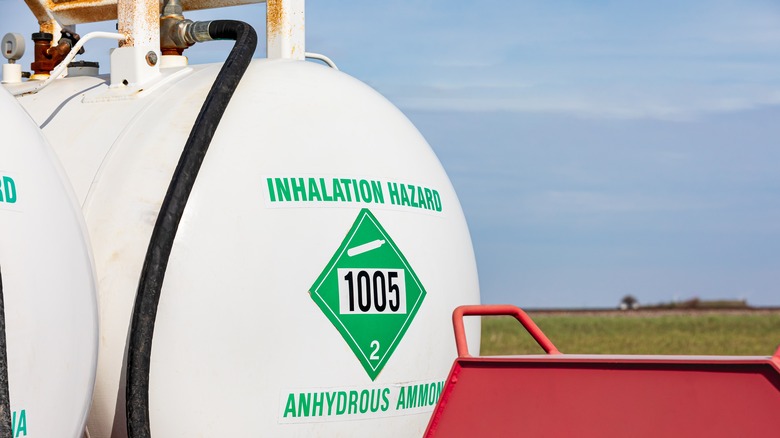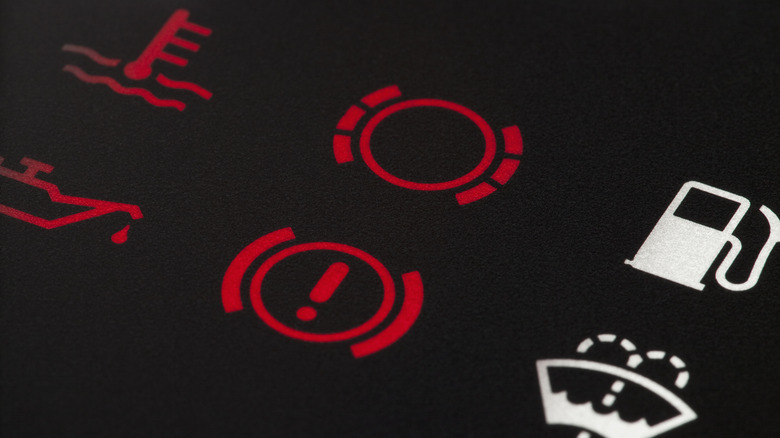
chemical industry/Shutterstock
Ammonia isn’t an uncommon chemical. If you work in agriculture or do any kind of gardening, you likely interact with it on a regular basis, as roughly 80% of ammonia produced is used in fertilizer. There are other uses for it, too, such as in household cleaning products. What’s not as widely known is that ammonia is combustible, meaning it can propel a vehicle with an internal combustion engine.
Advertisement
While Nissan has decided to stop investing in gas engines to focus on electric vehicles, Toyota is one big carmaker that chooses to not abandon ICEs and instead find alternative fuel for them. Ammonia as a fuel isn’t actually a new concept, as some vehicles ran on it in Word War II. And Toyota, in collaboration with GAC Motors, has determined that if it mixes liquid ammonia with another fuel source like diesel or hydrogen, it can produce a fuel source with 90% fewer carbon emissions than traditional gasoline to power consumer vehicles.
Why combine ammonia with something like diesel? Ammonia’s problem is its flame speed. Even though it’s combustible, the speed at which it travels through an engine would be significantly slower than that of traditional gasoline, barely moving an engine’s pistons . Consumers don’t want a low-powered vehicle. So ammonia needs to be cut with other chemicals, and a fuel source with 90% fewer carbon emissions sounds pretty good (which is why some shipping companies have used ammonia).
Advertisement
Ammonia-burning engines don’t produce carbon

J.J. Gouin/Shutterstock
For over 150 years, fossil fuels have been powering the world’s largest nations, contributing to negative climate impacts. Ever since these effects became widely known, there’s been a demand for vehicles that run on clean energy. Agencies have studied alternative fuel sources, including biofuels, but the most accessible alternative has been EVs, which don’t produce emissions. EVs rely on an electric motor powered by an array of batteries that owners can charge as needed. Some car owners prefer hybrids over EVs because they have a greater driving range. They still release harmful greenhouse gases, but nowhere near as much as traditional ICE vehicles.
Advertisement
The ammonia-burning engine Toyota has been developing won’t produce any carbon dioxide emissions, because there aren’t any carbon atoms in the chemical. That sounds great and clean, right? Wrong. As mentioned, for ammonia to work as a vehicle’s fuel, it must be mixed with other chemicals that have a faster flame speed. That’s why it’s a 90% reduction, not 100%.
Then there’s the matter of the toxic nitrogen oxide gases ammonia releases when it’s burned. These gases can cause acid rain and harmful health issues. If the compression system fails, it would release toxins into the atmosphere that are far worse than traditional ICE vehicles produce. So, while ammonia on its own produces zero carbon emissions, the additions it would need to work, combined with the hazards it poses to the atmosphere, mean it isn’t considerably better than ICE vehicles.
Advertisement
Ammonia has some other downsides

Caspar Benson/Getty Images
Let’s say that the compression system works perfectly and there would never be any risk of the nitrogen gases escaping in enough quantities to be a real danger to us. Yes, it could be another green method of transportation to go along with EVs and hybrid cars. However, a couple other adjustments would have to be made to make sure the engine works well enough.
Advertisement
First of all, ammonia is corrosive. It can eat through brass, zinc, some plastics, and copper, all of which could be found under the hood of a car. Something would need to be done about that before such an engine was ever mass-produced. Additionally, ammonia’s boiling point is considerably low. While traditional gasoline won’t boil until it reaches 122 degrees Fahrenheit, ammonia boils at just minus 28 degrees Fahrenheit. So the only way to prevent ammonia from overheating while your car sits in your garage is to create a pressurized compartment that’s under that temperature.
That’s not impossible to do, but it’s definitely an additional challenge. This means that Toyota, or whichever company builds such an engine, can’t simply modify a pre-existing one — they’d have to build one from scratch with these specific problems addressed. That would probably earn it a place among the weirdest engines ever built.
Advertisement